The Flexitarian diet is a semi-vegetarian diet that has been gaining popularity in recent years due to its flexible approach to healthy eating. This diet encourages individuals to consume mostly plant-based foods while allowing for some meat and animal products in moderation. The term “flexitarian” was coined by registered dietitian Dawn Jackson Blatner in her 2009 book, “The Flexitarian Diet: The Mostly Vegetarian Way to Lose Weight, Be Healthier, Prevent Disease, and Add Years to Your Life.”

The Flexitarian diet is not an all-or-nothing approach to eating, making it an accessible and sustainable lifestyle choice for many. By reducing meat consumption, individuals can reap the health benefits associated with a plant-based diet while still enjoying the occasional meat dish. This diet is also environmentally friendly, as it promotes a reduction in meat consumption, which has been linked to a decrease in greenhouse gas emissions and water usage.
Key Takeaways
- The Flexitarian diet is a semi-vegetarian diet that encourages mostly plant-based foods with some meat and animal products in moderation.
- This flexible approach to healthy eating is accessible and sustainable for many individuals.
- The Flexitarian diet is environmentally friendly and has been linked to a reduction in greenhouse gas emissions and water usage.
Understanding the Flexitarian Diet

Definition and Principles
The Flexitarian Diet is a flexible approach to eating that combines the benefits of a vegetarian diet with occasional meat consumption. It was created by registered dietitian Dawn Jackson Blatner to help people transition to a more plant-based diet without completely giving up meat. The diet focuses on adding more plant-based foods to the diet, such as fruits, vegetables, whole grains, legumes, nuts and seeds, while still allowing for the occasional inclusion of meat, poultry or fish.
Flexitarian vs. Vegetarian vs. Vegan
While the Flexitarian Diet shares some similarities with vegetarianism and veganism, it is more flexible. Vegetarians typically avoid meat, poultry, and fish altogether, while vegans exclude all animal products, including dairy and eggs. In contrast, the Flexitarian Diet allows for the occasional consumption of animal products, making it a more flexible option for those who do not want to give up meat entirely.
Levels of Flexitarianism
There are different levels of Flexitarianism, ranging from beginner to advanced. Beginner Flexitarians may still consume meat several times a week, while advanced Flexitarians may only eat meat once a week or less. The diet is flexible and allows individuals to choose the level of meat consumption that works best for them.
Overall, the Flexitarian Diet is a flexible and sustainable approach to healthy eating that encourages the consumption of more plant-based foods while still allowing for the occasional inclusion of meat. It is a great option for those who want to improve their health and reduce their environmental impact without completely giving up meat.
Health Benefits

The Flexitarian diet has gained popularity in recent years due to its numerous health benefits. This diet is a flexible approach to eating that emphasizes plant-based foods while allowing for occasional meat consumption. Here are some of the health benefits associated with the Flexitarian diet:
Weight Management
One of the most significant benefits of the Flexitarian diet is its potential for weight management. Plant-based diets are often associated with weight loss due to their high fiber content and low calorie density. A review of 12 studies found that individuals on a vegetarian diet lost an average of 4.5 pounds more than those on a non-vegetarian diet over an 18-week period 1[1].
Reduced Risk of Chronic Diseases
The Flexitarian diet has been associated with a reduced risk of chronic diseases such as heart disease, type 2 diabetes, and cancer. A study found that individuals who followed a vegetarian diet had a 25% lower risk of dying from heart disease than those who ate meat 2[2]. Another study found that individuals who followed a vegetarian diet had a 50% lower risk of developing type 2 diabetes than those who ate meat 3[2]. Additionally, a review of 96 studies found that vegetarians had a 15% lower risk of developing cancer than non-vegetarians 4[2].
Improved Nutrient Intake
The Flexitarian diet emphasizes whole, plant-based foods, which are rich in nutrients such as fiber, vitamins, and minerals. Plant-based diets have been associated with lower blood pressure and cholesterol levels, which can reduce the risk of heart disease 5[2]. Additionally, plant-based diets are often rich in antioxidants, which can help protect against chronic diseases such as cancer 6[2].
Overall, the Flexitarian diet is a flexible and sustainable approach to eating that offers numerous health benefits. By emphasizing plant-based foods and allowing for occasional meat consumption, individuals can improve their nutrient intake, reduce their risk of chronic diseases, and manage their weight.
References:
- https://www.healthline.com/nutrition/flexitarian-diet-guide#weight-loss[1]
- https://www.healthline.com/nutrition/flexitarian-diet-guide#disease-risk[2]
- https://www.healthline.com/nutrition/flexitarian-diet-guide#disease-risk[2]
- https://www.healthline.com/nutrition/flexitarian-diet-guide#disease-risk[2]
- https://www.healthline.com/nutrition/flexitarian-diet-guide#disease-risk[2]
- https://www.healthline.com/nutrition/flexitarian-diet-guide#disease-risk[2]
Dietary Components
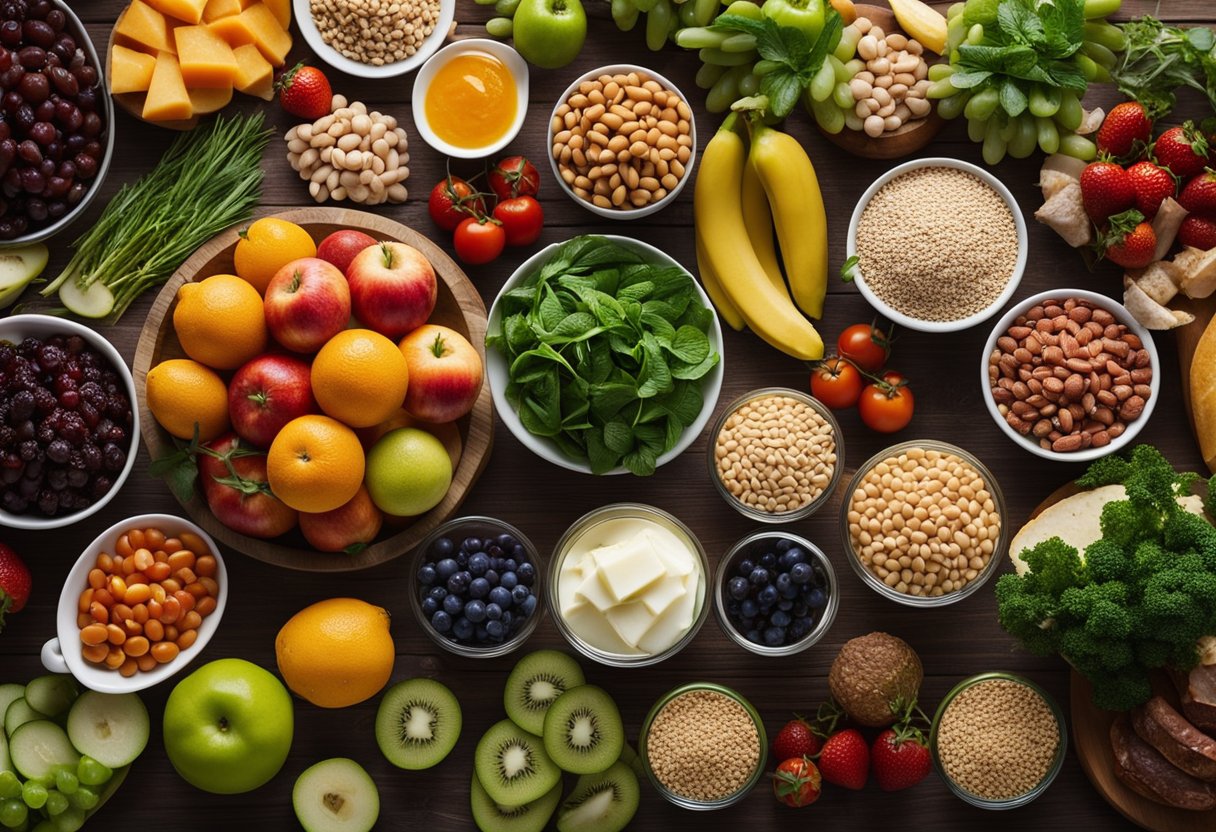
The Flexitarian diet is a semi-vegetarian diet that emphasizes plant-based foods while allowing animal products in moderation. The diet is flexible and can be adapted to suit individual preferences and needs. The following are the dietary components of the Flexitarian diet:
Plant-Based Foods
Plant-based foods are the foundation of the Flexitarian diet. These include fruits, vegetables, whole grains, nuts, seeds, beans, and legumes. These foods are rich in fiber, vitamins, minerals, and antioxidants, which are essential for maintaining good health.
Animal Proteins in Moderation
Animal proteins such as meat and fish are allowed in moderation in the Flexitarian diet. They provide essential nutrients such as protein, iron, and vitamin B12. However, it is recommended to limit the intake of animal protein and choose lean cuts of meat and fish to reduce the risk of heart disease.
Whole Grains and Legumes
Whole grains such as quinoa, brown rice, and whole wheat bread are an essential part of the Flexitarian diet. They are rich in fiber, vitamins, and minerals and help to keep you full for longer. Legumes such as lentils, chickpeas, and black beans are also an excellent source of protein and fiber.
Fruits and Vegetables
Fruits and vegetables are an essential part of the Flexitarian diet. They are rich in vitamins, minerals, and antioxidants and help to reduce the risk of chronic diseases such as heart disease, diabetes, and cancer. It is recommended to eat a variety of fruits and vegetables of different colors to ensure that you get a wide range of nutrients.
In summary, the Flexitarian diet is a plant-based diet that allows animal products in moderation. It emphasizes whole grains, legumes, fruits, and vegetables and limits the intake of processed foods and refined carbohydrates. The diet is flexible and can be adapted to suit individual preferences and needs.
Nutritional Considerations
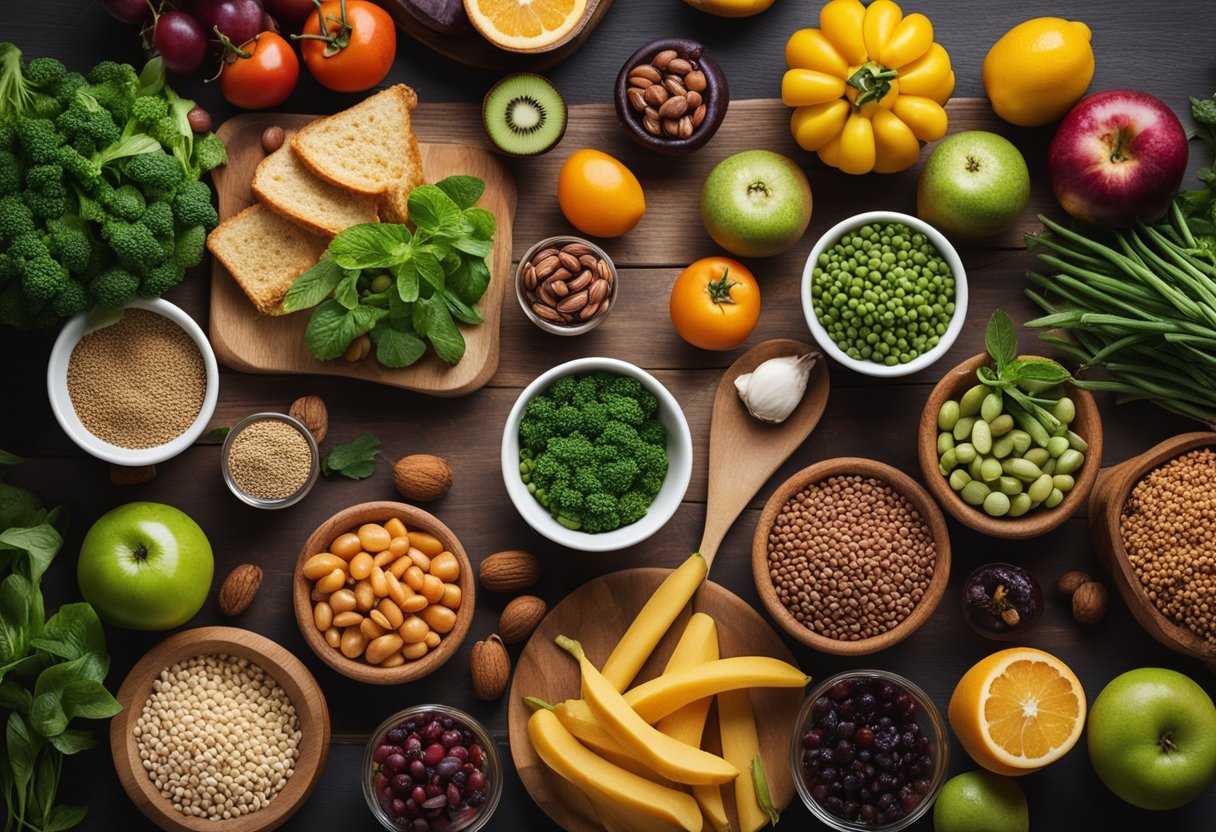
The flexitarian diet is a plant-based diet that emphasizes fruits, vegetables, whole grains, and legumes, while allowing for occasional meat consumption. While this diet can provide many health benefits, it is important to consider the nutritional implications of reducing or eliminating animal products from the diet.
Meeting Protein Requirements
Protein is an essential nutrient that is necessary for building and repairing tissues in the body. While animal products are often thought of as the primary source of protein, plant-based foods can also provide ample amounts of this nutrient.
Some plant-based sources of protein include beans, lentils, tofu, tempeh, nuts, and seeds. It is important to include a variety of these foods in the diet to ensure adequate protein intake. Aiming for a protein intake of around 0.8 grams per kilogram of body weight per day is generally recommended for most adults.
Ensuring Adequate Vitamin and Mineral Intake
Reducing or eliminating animal products from the diet can also lead to deficiencies in certain vitamins and minerals. Vitamin B12, for example, is primarily found in animal products and is important for nerve function and red blood cell production. Plant-based sources of vitamin B12 are limited, so supplementation may be necessary for those following a strict flexitarian or vegetarian diet.
Calcium is another nutrient that is often associated with dairy products, but can also be found in plant-based sources such as leafy greens, tofu, and fortified plant milks. Zinc is important for immune function and can be found in legumes, nuts, and seeds.
Balancing Fats and Carbohydrates
While the flexitarian diet emphasizes whole foods, it is important to consider the balance of macronutrients in the diet. Healthy fats, such as those found in nuts, seeds, and avocado, are important for brain function and hormone production.
Carbohydrates, on the other hand, provide energy for the body. Whole grains, fruits, and vegetables are all good sources of carbohydrates, but it is important to choose complex carbohydrates over simple sugars.
Overall, the flexitarian diet can provide many health benefits when done correctly. By including a variety of plant-based foods and occasional meat consumption, individuals can meet their nutritional needs while also reducing their environmental impact.
Environmental Impact

The Flexitarian Diet has gained popularity in recent years as a sustainable and healthy way of eating. One of the primary reasons for its success is its low environmental impact. The diet emphasizes plant-based foods, which are known to have a lower carbon footprint than animal products.
Reducing Carbon Footprint
According to a study by the University of Oxford, a plant-based diet can reduce an individual’s carbon footprint by up to 73%. This is because the production of animal products requires more resources and emits more greenhouse gases than the production of plant-based foods. By reducing the consumption of animal products, the Flexitarian Diet can contribute to the reduction of carbon emissions, which is essential for the health of the planet.
Sustainable Eating Practices
The Flexitarian Diet promotes sustainable eating practices by encouraging the consumption of locally sourced and seasonal foods. This reduces the carbon footprint associated with transporting food over long distances and ensures that the food is fresh and nutrient-dense. Additionally, the diet emphasizes the use of whole foods and minimally processed foods, which are healthier for the body and the planet.
In conclusion, the Flexitarian Diet is an environmentally conscious way of eating that can help reduce an individual’s carbon footprint and promote sustainable eating practices. By emphasizing plant-based foods and reducing the consumption of animal products, the diet can contribute to a healthier planet and a healthier body.
Practical Tips and Guidelines
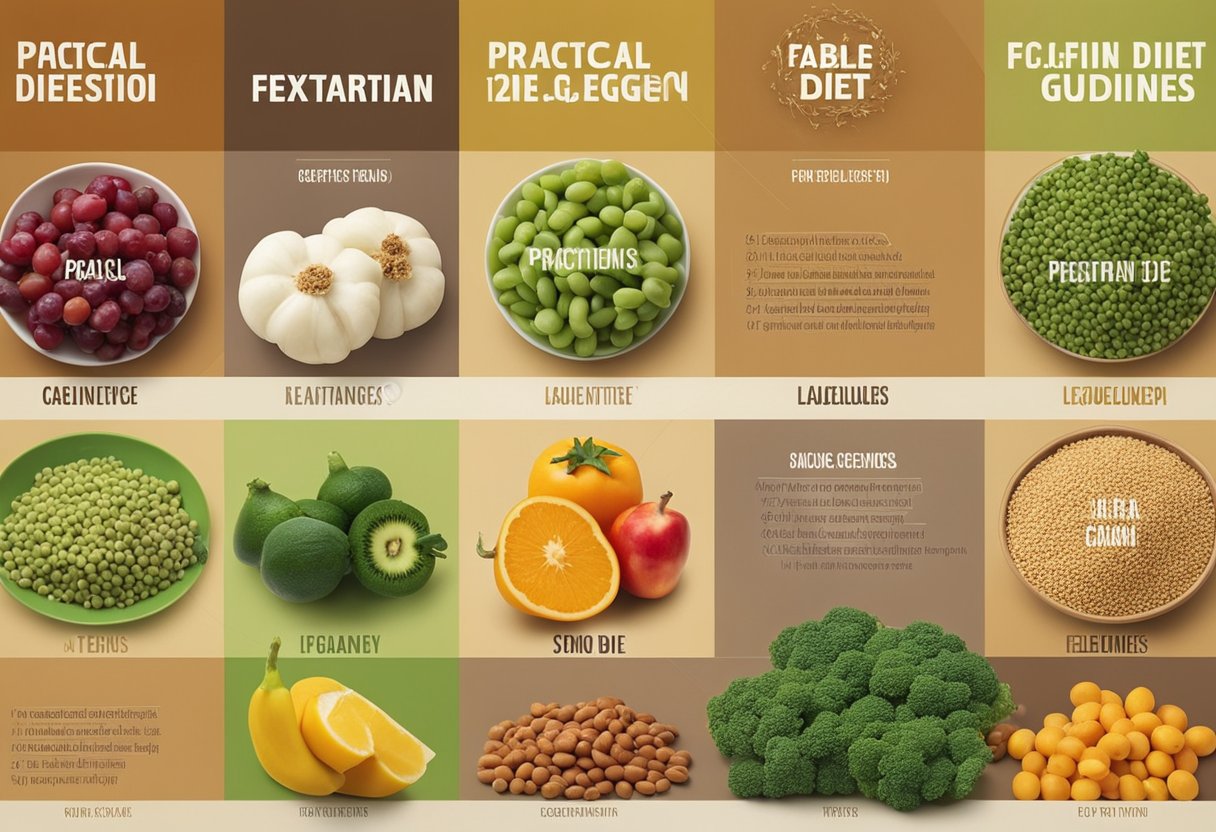
Creating a Flexitarian Meal Plan
Creating a meal plan is essential to follow a flexitarian diet. It helps in maintaining a balanced diet and ensures that the body is getting all the required nutrients. The meal plan should include a variety of plant-based foods like fruits, vegetables, whole grains, legumes, and nuts. One can also include meat and animal products occasionally.
A good way to start is by planning meals around plant-based proteins like tofu, quinoa, lentils, peas, and black beans. These foods are rich in protein and can be used as a substitute for meat. One can also try new recipes and experiment with different cuisines to keep the meals interesting.
Incorporating Flexibility and Balance
Flexibility is the key to following a flexitarian diet. It allows one to incorporate meat and animal products occasionally without feeling guilty. It is important to maintain a balance between plant-based and animal-based foods. One can start by reducing the amount of meat and animal products in the diet gradually.
Incorporating more plant-based foods in the diet can also help in reducing the risk of chronic diseases and improving overall health. It is important to focus on nutrient-dense foods like fruits, vegetables, whole grains, and legumes.
Finding Alternatives to Meat
Finding alternatives to meat is an important aspect of following a flexitarian diet. One can try plant-based proteins like tofu, tempeh, and seitan. These foods are rich in protein and can be used as a substitute for meat in recipes.
Another alternative is to use meat substitutes like veggie burgers, sausages, and meatballs. These products are available in most grocery stores and can be used in recipes that call for meat.
In conclusion, following a flexitarian diet is a great way to improve overall health and reduce the risk of chronic diseases. By creating a meal plan, incorporating flexibility and balance, and finding alternatives to meat, one can easily follow a flexitarian diet.
Challenges and Considerations

Potential Nutritional Deficiencies
One potential challenge of following a flexitarian diet is the risk of nutritional deficiencies. Since the diet emphasizes plant-based foods, individuals may not be getting enough vitamin B12, calcium, and zinc. Vitamin B12 is primarily found in animal products, and calcium and zinc are more easily absorbed from animal sources. However, there are plant-based sources of these nutrients that can be included in a flexitarian diet. For example, fortified cereals and plant-based milks can be good sources of vitamin B12, while leafy greens and fortified orange juice can provide calcium. Nuts, seeds, and legumes can also be good sources of zinc.
Managing Social and Dining Out Situations
Another consideration for those following a flexitarian diet is managing social and dining out situations. Eating meat-free can be challenging in social settings where meat is the main focus. It can also be difficult to find vegetarian or vegan options when dining out. However, there are strategies that can help. For example, individuals can suggest vegetarian or vegan restaurants or look up menus online before going out to eat. They can also ask the server if meat can be substituted with a vegetarian option or ask for a dish to be prepared without meat. Additionally, bringing a vegetarian or vegan dish to a social gathering can ensure that there is something to eat that fits within the flexitarian diet.
Overall, while there are challenges to following a flexitarian diet, individuals can manage potential nutritional deficiencies and social and dining out situations with planning and preparation.
Recipes and Meal Ideas
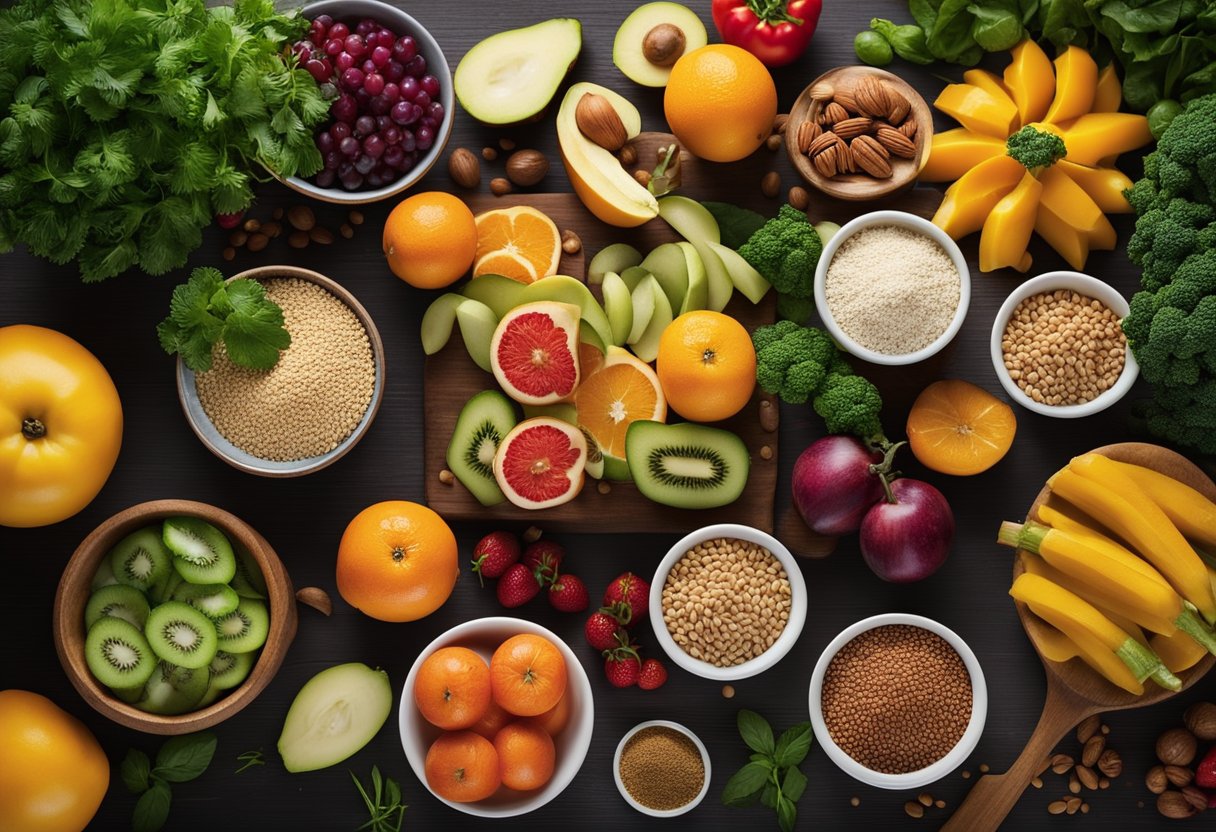
Flexitarian diet is a plant-based eating style that emphasizes on nutrient-dense foods while allowing some animal products in moderation. With this diet, one can enjoy a wide variety of delicious and satisfying meals that are low in added sugar and high in fiber, vitamins, and minerals. Here are some recipes and meal ideas for breakfast, lunch, and dinner that are perfect for the flexitarian diet.
Breakfast Options
Breakfast is the most important meal of the day, and on the flexitarian diet, there are plenty of healthy and tasty options to choose from. Here are some ideas to get you started:
- Avocado Toast: Toast a slice of whole-grain bread and top it with mashed avocado, sliced tomatoes, and a sprinkle of salt and pepper. This breakfast is packed with healthy fats, fiber, and vitamins.
- Greek Yogurt Parfait: Layer Greek yogurt, fresh berries, and granola in a bowl or jar for a protein-packed breakfast that is also low in added sugar.
- Oatmeal: Cook rolled oats with almond milk and add chopped nuts, dried fruit, and a drizzle of honey for a filling and nutritious breakfast.
Lunch Selections
Lunchtime can be a challenge when you’re on the go, but with these flexitarian meal ideas, you can stay healthy and satisfied all day long.
- Quinoa Salad: Cook quinoa and add chopped vegetables, such as cucumber, bell pepper, and cherry tomatoes. Top with a simple vinaigrette made with olive oil, lemon juice, and Dijon mustard.
- Veggie Wrap: Fill a whole-grain wrap with hummus, sliced avocado, shredded carrots, and greens for a quick and easy lunch that is also nutrient-dense.
- Sweet Potato and Black Bean Bowl: Roast sweet potato cubes and mix with black beans, corn, and salsa. Serve over brown rice for a filling and flavorful lunch.
Dinner Creations
Dinner is the perfect time to get creative with your flexitarian meal ideas. Here are some recipes to inspire you:
- Vegetable Stir-Fry: Stir-fry chopped vegetables, such as broccoli, bell pepper, and snow peas, with tofu or tempeh. Serve over brown rice for a satisfying and healthy dinner.
- Mushroom Stroganoff: Cook sliced mushrooms with garlic and onion and mix with a creamy sauce made with Greek yogurt and Dijon mustard. Serve over whole-grain pasta for a comforting and delicious dinner.
- Black Bean Soup: Cook black beans with onion, garlic, and spices and blend until smooth. Serve with a dollop of Greek yogurt and chopped cilantro for a hearty and flavorful dinner.
In conclusion, the flexitarian diet offers plenty of recipes and meal ideas that are both healthy and delicious. By focusing on nutrient-dense foods and limiting added sugar, one can enjoy a satisfying and balanced eating style that promotes overall wellness.
Expert Insights

Advice from Registered Dietitians
When it comes to the Flexitarian Diet, registered dietitians have some valuable insights to share. According to Dawn Jackson Blatner, a registered dietitian and the creator of the Flexitarian Diet, the key to success is to focus on adding more plant-based foods to your diet rather than cutting out meat entirely. She recommends starting small by incorporating one or two meatless meals per week and gradually increasing the number over time. Blatner also suggests experimenting with different plant-based proteins such as tofu, tempeh, and legumes to keep meals interesting and satisfying.
Other registered dietitians agree that the Flexitarian Diet can be a healthy and sustainable approach to eating. They note that plant-based diets have been linked to a lower risk of chronic diseases such as heart disease, diabetes, and certain types of cancer. However, they caution that it’s important to make sure you’re getting enough nutrients, particularly protein and iron, if you’re reducing your meat intake. They suggest incorporating a variety of plant-based proteins and iron-rich foods such as leafy greens, nuts, and whole grains into your diet.
Success Stories and Testimonials
Many people have found success with the Flexitarian Diet, both in terms of improving their health and reducing their environmental impact. Some have even shared their stories and tips online. For example, one woman shared on her blog that she lost weight and improved her digestion by following a Flexitarian Diet. She recommends starting with easy swaps such as using lentils instead of ground beef in chili and adding more veggies to meals.
Another woman shared on a health and wellness website that she was able to reduce her meat intake and still meet her protein needs by incorporating more plant-based proteins such as quinoa and edamame into her diet. She also found that she had more energy and felt better overall.
Overall, the Flexitarian Diet offers a flexible and sustainable approach to eating that can be tailored to individual needs and preferences. By focusing on adding more plant-based foods to your diet, rather than eliminating meat entirely, you can improve your health and reduce your environmental impact. As with any healthy diet, it’s important to consult with a registered dietitian to ensure that you’re getting all of the nutrients your body needs.
Frequently Asked Questions
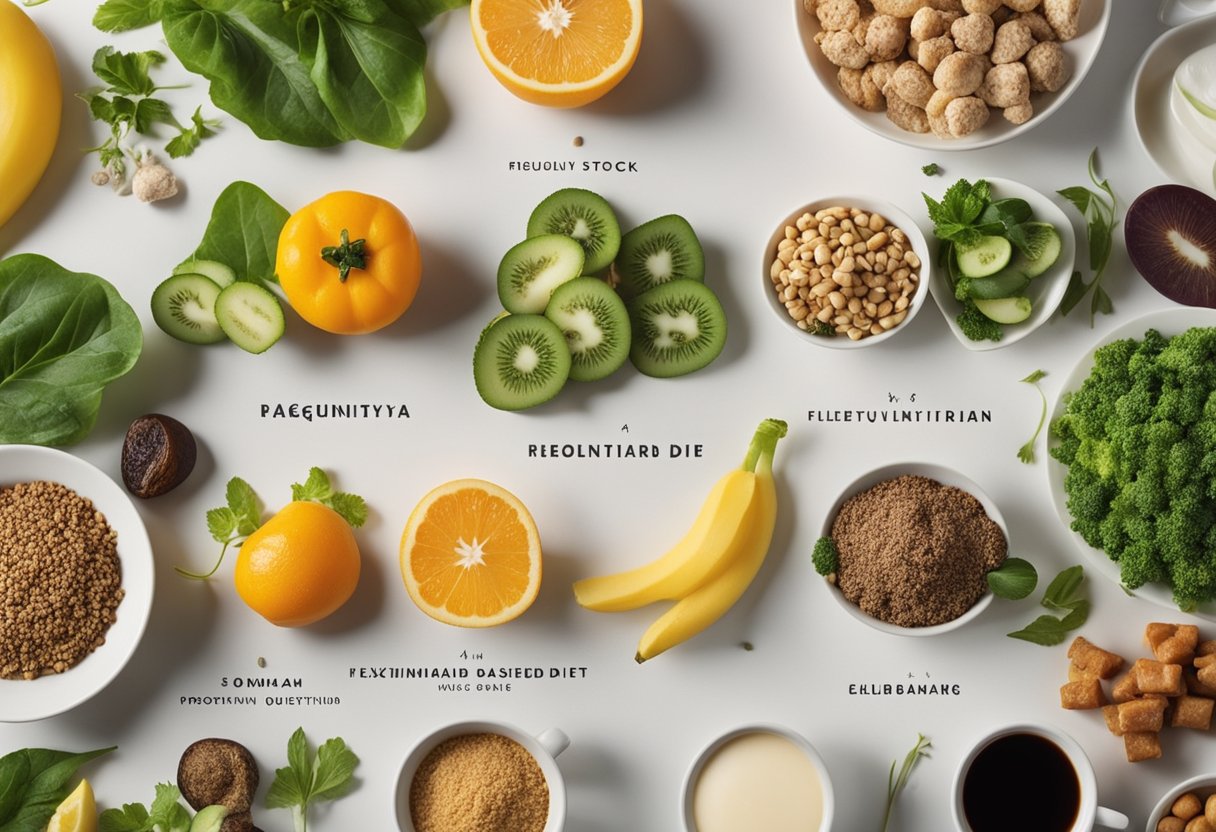
What are the primary benefits of adopting a Flexitarian diet?
The Flexitarian diet has numerous health benefits, including weight loss, reducing the risk of chronic diseases such as diabetes, heart disease, and cancer, and improving overall health and well-being. The diet is rich in fruits, vegetables, legumes, and whole grains, which provide essential nutrients, vitamins, and minerals.
How does a Flexitarian diet differ from a Mediterranean diet?
While both diets emphasize plant-based foods, the Mediterranean diet includes more seafood and healthy fats like olive oil, while the Flexitarian diet allows for some meat consumption. The Mediterranean diet also includes moderate amounts of dairy products, while the Flexitarian diet is more flexible and allows for a wider variety of foods.
What types of meal plans are recommended for someone starting a Flexitarian diet?
There is no one-size-fits-all meal plan for the Flexitarian diet, but a good starting point is to incorporate more plant-based meals into your diet and gradually reduce the amount of meat you consume. Eating a variety of fruits, vegetables, legumes, and whole grains is recommended, along with moderate amounts of dairy products and meat.
Are there any potential drawbacks to following a Flexitarian diet?
One potential drawback of the Flexitarian diet is that it may be difficult for some people to reduce their meat consumption. Additionally, if not planned properly, a Flexitarian diet could lead to nutrient deficiencies. However, with proper planning, a Flexitarian diet can provide all the necessary nutrients for good health.
How often do practitioners of a Flexitarian diet typically consume meat?
A Flexitarian diet is flexible, and there is no set amount of meat that practitioners must consume. However, the diet emphasizes plant-based foods and encourages practitioners to reduce their meat consumption and choose leaner cuts when they do consume meat.
Is it possible to lose weight by following a Flexitarian diet plan?
Yes, it is possible to lose weight by following a Flexitarian diet plan. The diet is rich in fiber, which can help you feel full and reduce your overall calorie intake. Additionally, the Flexitarian diet encourages the consumption of nutrient-dense foods, which can help promote weight loss and improve overall health.
References
- The Flexitarian Diet: A Detailed Beginner's Guide. https://www.healthline.com/nutrition/flexitarian-diet-guide#weight-loss Accessed October 21, 2025
- The Flexitarian Diet: A Detailed Beginner's Guide. https://www.healthline.com/nutrition/flexitarian-diet-guide#disease-risk Accessed October 21, 2025
